을지로(乙支路)는 서울 한가운데에 위치한 공업 지역이다. 제조업으로 오랫동안 호황을 누렸던 이곳에는 오래된 공장과 점포들이 옛 모습 그대로 남아 있다. 최근 몇 년 사이 젊은 문화예술인들이 둥지를 틀면서 과거와 현재가 공존하는 독특한 풍경을 보여 주며, 새로운 정체성을 찾아가고 있다.
Seoul’s Euljiro area was shaped by Korea’s rapid industrialization during the latter half of the 20th century. Like a time capsule, the neighborhood retains many factories, workshops, and stores from its halcyon years. But it is also home to hip, understated places attracting young people. This juxtaposition of old and new is transforming Euljiro’s identity.
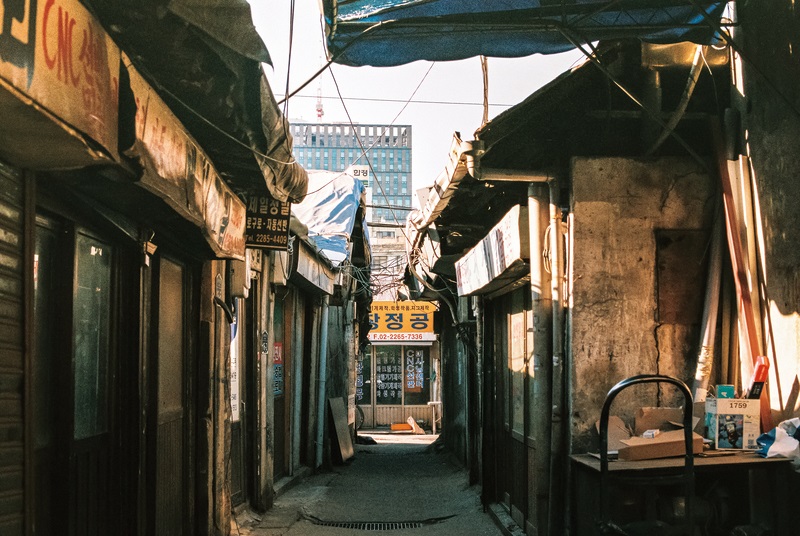
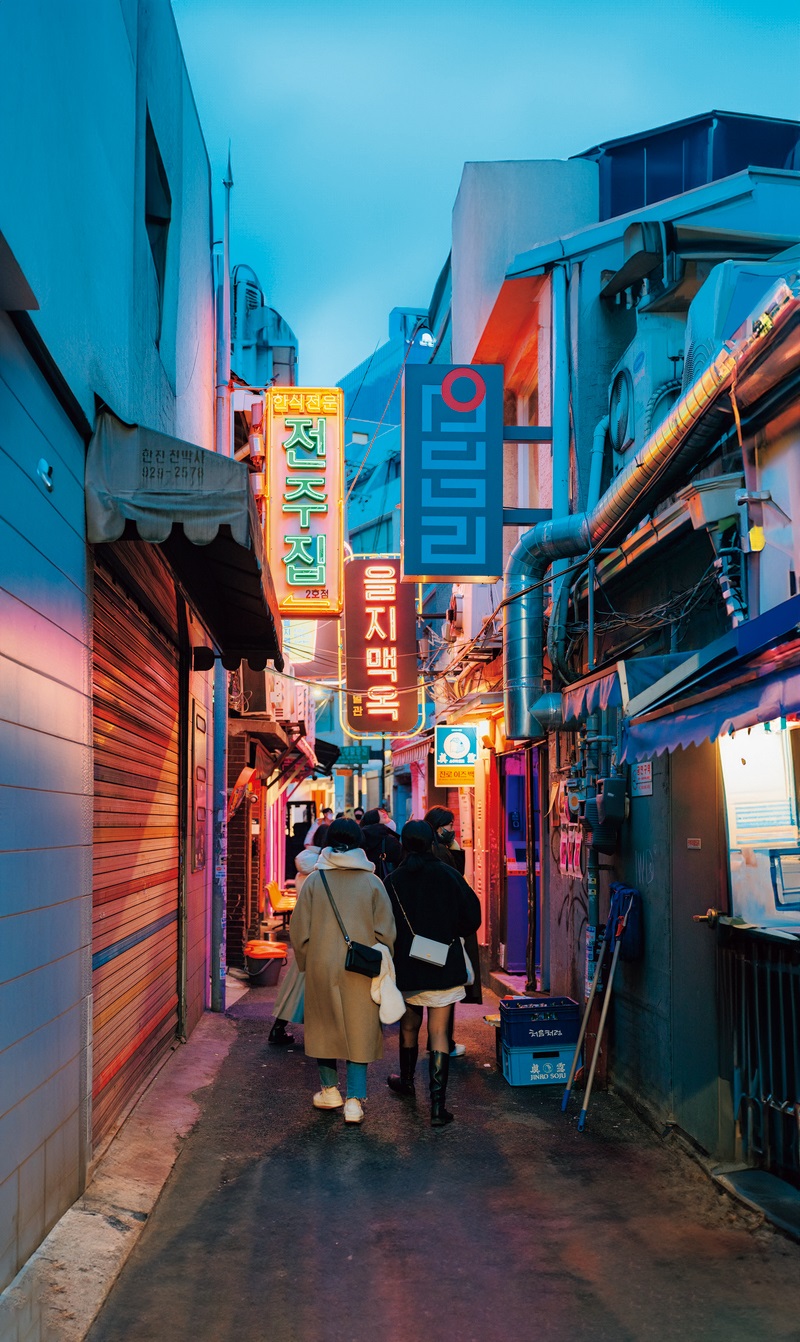
강남(江南)이나 명동(明洞), 홍대(弘大) 입구처럼 사람들이 항상 복작거리는 번화가가 아닌데도, 몇 년 전부터 소셜네트워크서비스를 중심으로 인기를 끄는 지역이 있다. ‘#핫플레이스’라는 해시태그와 함께 빈번하게 언급되는 그곳은 바로 을지로다. 이곳은 인쇄소, 철공소 같은 소형 공장들과 타일, 조명 등 자재상들이 몰려 있는 도심 내 대표적인 공업 지역으로 ‘없는 게 없는’ 동네로 통한다. 하지만 골목 곳곳을 천천히 걷다 보면 예상외로 없는 게 많다는 걸 알게 된다. 서울 한가운데 자리 잡고 있으면서도 편의점 하나 마주치기 어렵고, 동네마다 흔하게 볼 수 있는 스타벅스나 맥도날드 매장도 큰길가나 지하철역 입구가 있는 데까지 나가지 않으면 찾을 수 없다.
Occupying central Seoul, the Euljiro area is packed with small timeworn factories, workshops, and hardware stores. Its subdued, narrow lanes are filled with motorcycles whizzing by, the sound of welding, the acrid smell of grinding metal, and the purposeful bustle of people going about their livelihood. This contrasts with other popular areas in Seoul, such as Gangnam, Myeong-dong, and Hongdae, which are known for their wide, neon-lit roads packed with retail, dining, and drinking establishments for all different budgets.
번듯하고 말끔한 것 대신 이곳의 골목들을 채우고 있는 것은 바삐 움직이는 오토바이들과 용접 소리, 쇠를 갈아 내는 매캐한 냄새, 그리고 각자의 방식으로 오늘의 을지로를 만들어 온 사람들의 삶과 시간이다. 을지로에 켜켜이 쌓인 과거의 흔적들은 색다른 재미를 추구하거나 옛것에 이끌리는 젊은이들을 불러 모은다.
Yet, Euljiro’s distinctive ambience and vintage charm, the vestiges of its past etched in its byways and buildings, draw in young people all the same. Spreading the word on social media, they often attach “#hotspot” to posts they make from this neighborhood.
제조업의 산실 – EPICENTER OF MANUFACTURING
을지로는 1914년 행정 구역이 개편되면서 ‘황금정(黃金町)’이라 불렸고, 고구려(BC 37년~668년) 시대의 명장인 을지문덕(乙支文德)의 이름을 따 1946년 현재의 지명으로 바뀌었다. 이곳이 제조업 중심지로 모습을 갖추기 시작한 시기는 20세기 초다. 방직, 식품, 인쇄업 등이 활성화되면서 일대가 근대 상공업 지역으로 발돋움했다.
During the Japanese occupation of Korea (1910– 1945), Seoul’s administrative districts were reorganized and its center named Hwanggeumjeong. Blossoming textile, food, and printing industries turned the area into a commercial and industrial hub. Following Korea’s liberation, the area was renamed after Eulji Mundeok, a famous general of the Goguryeo Kingdom (37 BCE–668 CE).
한국전쟁(1950~1953) 이후에는 피난민들이 모여들면서 을지로와 그 아래 천변인 청계천(淸溪川)에 판자촌이 형성되었다. 각지에서 찾아든 사람들이 이곳에서 생계를 유지했다. 밤에는 허름한 거처에서 새우잠을 자고, 낮에는 노점과 좌판에서 되는 대로 물건을 팔았다. 주력 상품은 미군 부대에서 흘러나온 기계와 공구들이었다. 전쟁 이후 쓸모를 잃은 고철도 거래되었다. 상품을 판매하던 사람들이 점차 전문성을 갖추면서 기계와 공구를 수리하거나 직접 제작하는 일도 늘어났다.
어느덧 을지로는 무엇이든 뚝딱 만들어 낼 수 있는 장인들이 모인 곳으로 인식되었다. 항간에는 “을지로와 청계천 한 바퀴만 돌면 탱크도 만들 수 있다.”는 우스갯소리까지 나돌게 되었다. 그만큼 이 지역의 제조업 기술이 뛰어나다는 뜻이다. 전기∙전자, 금속, 유리, 조명, 도기, 가구 등 제조 업체가 골목골목마다 둥지를 틀고 을지로를 더욱 활성화시켰다. 전성기였던 1970년대에는 손님들이 하도 밀려들어 상인들이 돈을 셀 시간도 없을 정도였다고 한다.
After the Korean War (1950–1953), much of Seoul laid in ruins, but people from all corners of the country still flocked to the capital, hoping to eke out a living during its wide-scale reconstruction. At night they curled up in the cramped shanties of Euljiro, and during the day sold whatever they could on the streets.
Machinery and tools from the U.S. Army and scrap metal that was rendered obsolete after the war ended up in Euljiro. Local merchants gradually acquired the expertise to repair or manufacture machinery themselves, gaining Euljiro a reputation as a place where expert craftsmen could make practically anything from scratch. People even joked, “You could build your own tank in Euljiro,” a testimony to the advanced manufacturing skills that had evolved there.
The area flourished. Alleyways turned into light-industry corridors producing an array of items, including electrical and electronic goods, metal, glass, light fixtures, pottery, and furniture. The 1970s saw the peak of Korea’s rapid urbanization and industrialization, which forever changed the course of the nation. Businesses in Euljiro were said to be flooded with so many customers every day that the owners barely had time to count their money.
그러던 을지로가 내리막길을 걷는 시기가 왔다. 제조업을 필두로 한국 경제가 활황을 누리던 1980년대 후반, 이곳의 주력 산업인 전기∙전자가 도심 부적격 업종으로 지정되면서 상당수 업체가 다른 지역으로 이전해야 했다. 게다가 20세기 초부터 형성된 주거 환경과 시설들이 노후하면서 이 일대에 재개발 바람이 불었다. 그러나 복잡한 필지 정리 문제로 인해 재개발이 쉽사리 진행되지 못했고, 결국 지가(地價)만 높아진 채 밀레니엄을 맞이했다.
By the late 1980s, government officials decided that manufacturing electric appliances and electronics — the area’s lifeblood — was unsuitable for urban centers. This, in addition to deteriorating residential housing, prompted the government to designate Euljiro for redevelopment. Seoul was quickly turning into a forest of office buildings and apartment complexes, and with three subway lines crisscrossing through Euljiro, its convenient location made it an inviting target for city planners and property developers.
Business owners and residents were told to relocate, but negotiations stalled over the division and ownership of land lots, driving up property prices and putting a hold on Euljiro’s redevelopment.
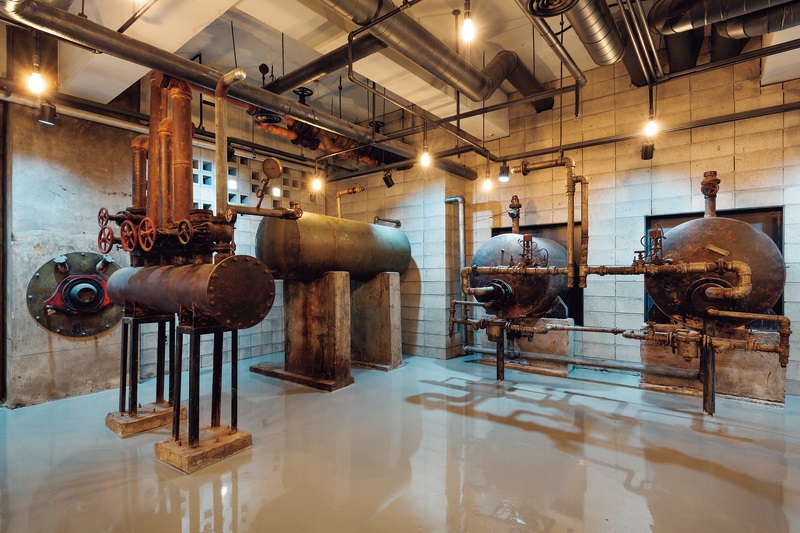
옛것에 대한 존중 – RESPECT FOR TRADITION
을지로는 산업뿐 아니라 예술 분야에서도 효용성이 높은 지역이었다. 청년 예술가들은 미술∙영화∙연극 등의 작업에 필요한 재료들을 이곳에서 손쉽게 구할 수 있었고, 없으면 기술자들에게 의뢰해 제작할 수도 있었다. 을지로의 장인들은 청년 예술가들이 요청한 것들을 만들어 주며 그들과 대화를 나눴고, 때로는 기술적인 조언과 자문을 통해 문화예술 프로젝트의 일원이 되기도 했다. 이들이 을지로를 자주 찾는 데에는 지리적인 이점도 한몫했다. 을지로에는 지하철 2, 3, 5호선이 지나가기 때문에 접근성이 매우 뛰어나다.
Among the area’s customers were young creatives who needed materials for their art, film, and theater projects. As craftsmen filled orders, they would interact with the artists, discussing specifications, giving technical advice, and even providing consultation, thereby serving as quasi-collaborators on their projects.
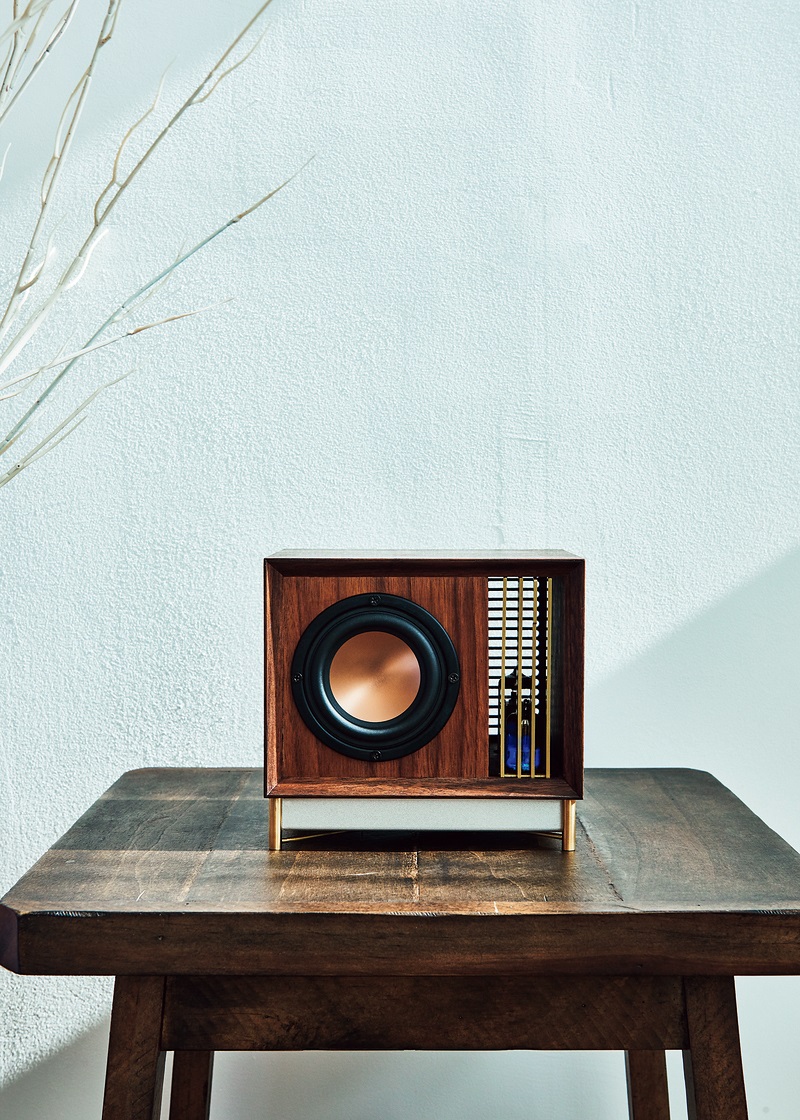
쇠락해 가는 을지로의 가치를 일깨우며 이곳에 변화의 바람을 일으킨 주인공은 이들청년들이다. 2010년대 중반부터 젊은 문화예술인들이 작업실이나 전시 및 공연 공간을 얻기 위해 을지로를 눈여겨보기 시작했다. 다른 지역에 비해 저렴한 임대료가 을지로를 선택하게 한 매력적인 요인이었다. 그러나 그보다 더 큰 이유는 특유의 물리적 환경에 있다. 을지로는 땀 냄새 나는 노동의 현장에서 느껴지는 생동감과 세월의 더께가 앉은 건물들, 그리고 미로처럼 얽혀 있는 골목들이 어우러져 묘한 감흥을 불러일으켰다.
It was these young artists who engendered a wind of change in the deteriorating neighborhood, shining new light on its intrinsic value. From the mid-2010s, those looking for a studio, exhibition space, or performance venue were drawn to Euljiro. Affordable rents made it an attractive choice, but a bigger reason was the particular atmosphere created by its aging buildings, labyrinthine alleyways, and the energy of laborers toiling away.
을지로에 마련된 젊은 문화예술인들의 공간에는 한 가지 공통점이 있다. 이들은 이 지역의 전반적인 분위기와 이질감이 생기지 않도록 공간을 조성했다. 임대한 작업실이나 전시장을 목적에 맞게 완전히 레노베이션하는 대신 대부분 기존 인테리어를 그대로 활용했다. 수십 년 전에 유행했던 벽돌 장식이나 오래된 가구를 함부로 부수지 않았다. 이전 점포나 공장의 간판을 바꾸지 않고 그대로 사용하는 경우도 많다. 그 자체로 을지로의 역사가 된 것들을 존중하며 보존했던 것이다. 이들이 새롭게 조성한 공간들은 기존 을지로의 모습에 자연스럽게 스며들었다.
The artists all shared a commitment to creating spaces that did not clash with the surroundings. Rather than opting for a complete makeover to suit studios or exhibition venues to their purposes, most chose to preserve the original interiors.
This consideration paired nicely with the budding retro trend. New occupants refrained from tearing down brick façades and discarding old furniture, in vogue decades ago, and in most cases, they even retained the signboards of the old stores and factories. This respect for Euljiro’s place in history and the desire to preserve its character allowed for a harmonious balance of new and old.
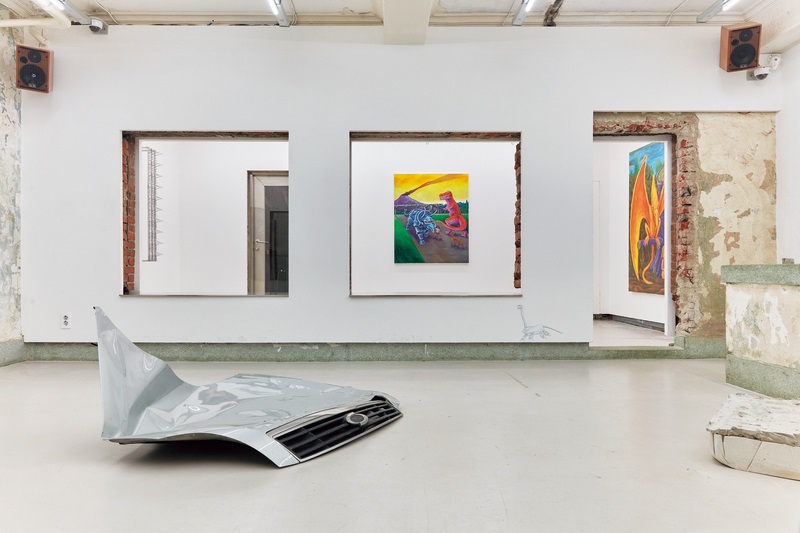

힙지로의 탄생 – BIRTH OF “HIPJIRO”
을지로에 정착한 문화예술인들은 딱히 돈이 되지 않는 전시나 공연일지라도 새로움을 보여 줄 수 있다면 과감하게 시도했다. 을지로가 지니고 있는 지리적, 건축적 특징을 작품에 녹여 내는 실험도 꾸준히 이루어졌다. 을지로에서 볼 수 있는 전시나 공연을 ‘장소 특정적 콘텐츠’라 말하는 것은 이런 연유에서 비롯된다.
The artists who settled in Euljiro boldly pursued innovative ideas, even if it meant that their exhibitions or performances weren’t financially lucrative. They engaged in artistic experimentation, integrating the area’s geographical and architectural characteristics into their work. This is why certain events staged in Euljiro are referred to as “site-specific content.”
이들의 문화예술 활동은 을지로의 음식 문화에도 점차 스며들기 시작했다. 문화예술 공간들 근처에는 차와 술을 마시며 대화를 나눌 수 있는 가게들이 하나둘 들어섰다. 이 가게들도 대부분 기존 업소의 흔적을 지우지 않았다. 음식점 이름을 내걸지 않는 경우도 부지기수다. 어느새 이곳들은 복합 문화 공간이 되었다. 레스토랑, 카페, 펍 등과 작업실, 갤러리, 공연장 등이 명확하게 구분되지 않고 경계가 허물어졌다. 레스토랑에서 미술 작품 전시를 하거나 카페가 일일 공연장이 되는 식이다. 맛있는 칵테일을 마실 수 있는 바에서 멋진 수공예품을 만나는 것 역시 을지로에서는 얼마든지 가능하다. 각각의 목적과 쓰임이 분명하던 서울에서 모든 것이 한데 어우러진 을지로는 입소문이 나면서 자연스럽게 핫플레이스가 되었다. 이른바 ‘힙지로(을지로에 영어 단어 hip을 합쳐 만든 신조어)’가 탄생한 것이다.
The art and culture projects that revitalized the area gradually permeated its food culture as well, with coffee shops and bars popping up one by one. The owners of these establishments also chose not to erase the vestiges of their predecessors, with many restaurants not even displaying their name out front.
Some have evolved into multipurpose cultural spaces; on a given day, restaurants, cafés, and pubs may serve as studios, galleries, and performance venues. A restaurant will play host to an art exhibit while a café is turned into a concert hall. Only in Euljiro do metal workers and cocktail-sipping hipsters coexist in shared spaces. This is the charm of an area that has been transformed into a cultural hotspot through word of mouth, earning it the nickname “Hipjiro,” a compound of the English word “hip” and the last two syllables of Euljiro.
을지로는 이제 오랜 시간 축적해 온 노동의 이미지에서 벗어나 기술과 예술, 낡은 것과 새것이 조화롭게 공존하는 방향으로 정체성을 만들어 가고 있다. 미로 같은 골목길에서 숨은그림찾기를 하듯 재미있는 공간을 찾아내는 것은 을지로만이 선사하는 독특한 묘미이다.
This historic neighborhood is shedding its long-established image associated with labor and manufacturing and reshaping its identity. Roaming the maze-like alleyways just to chance upon a one-of-a-kind spot is a special experience that you can only have in Euljiro.
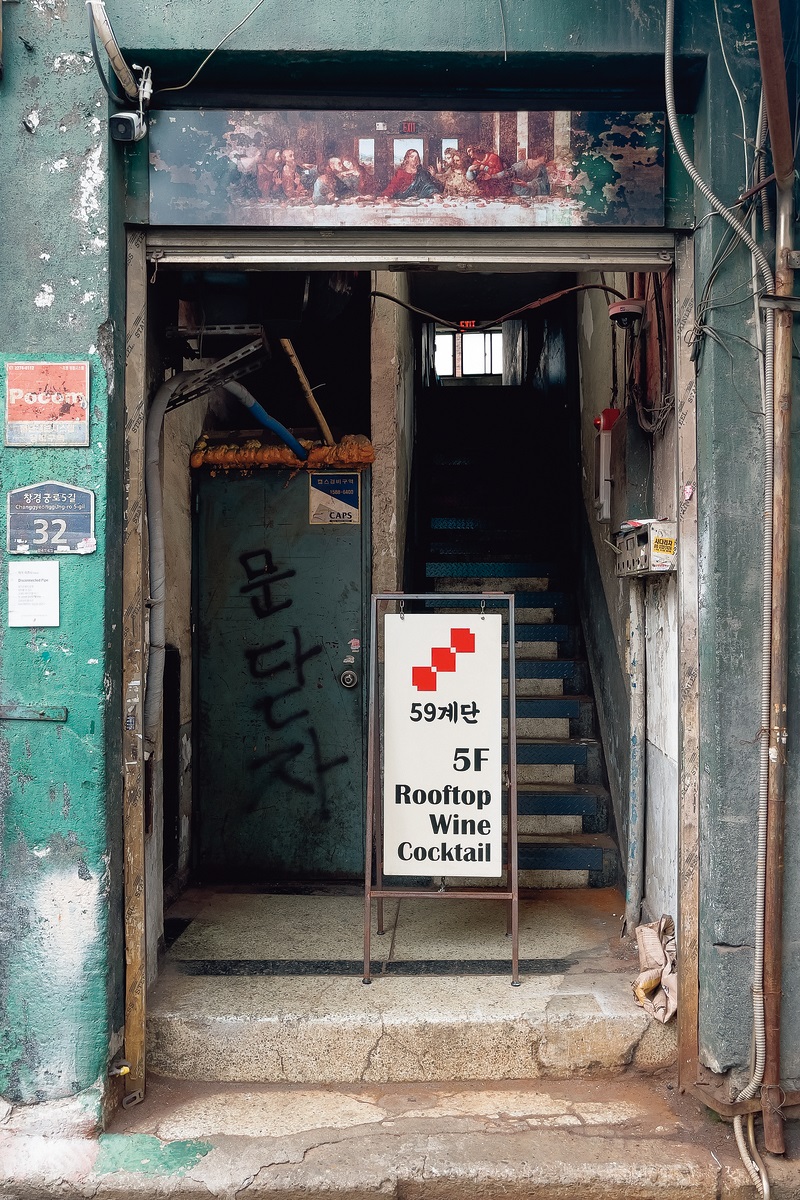
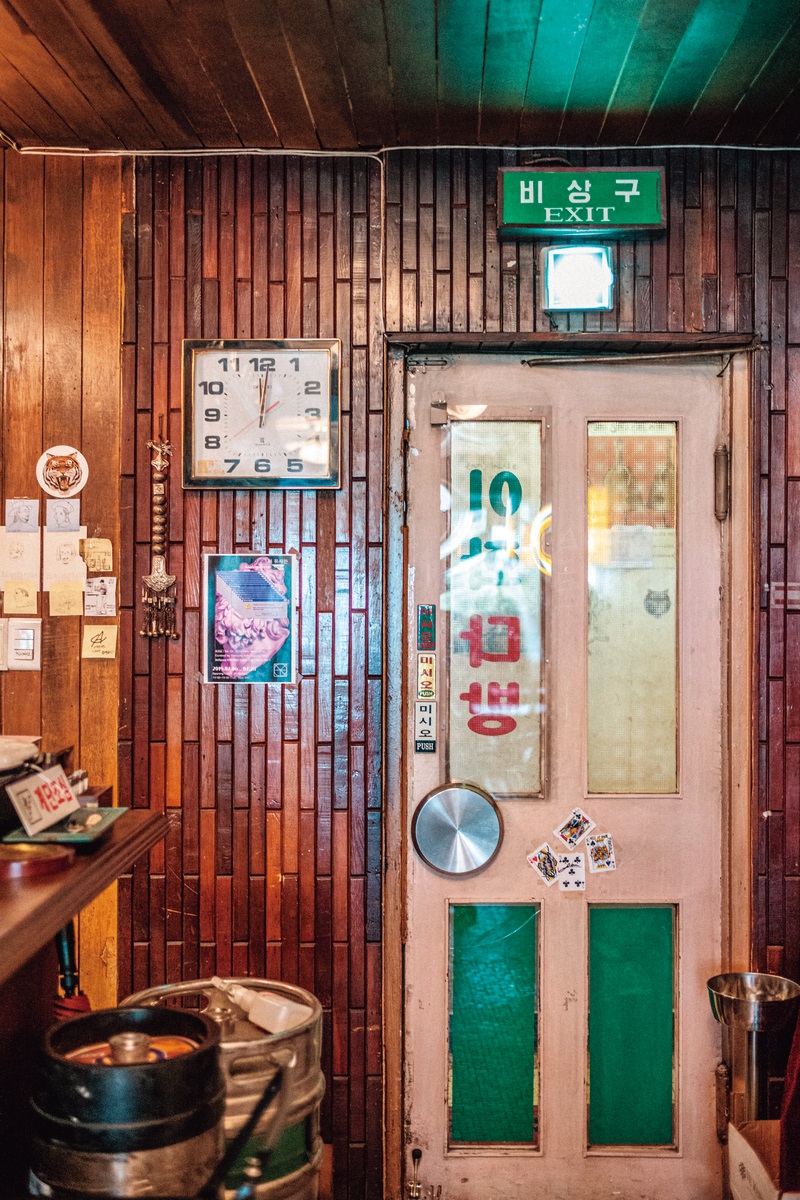
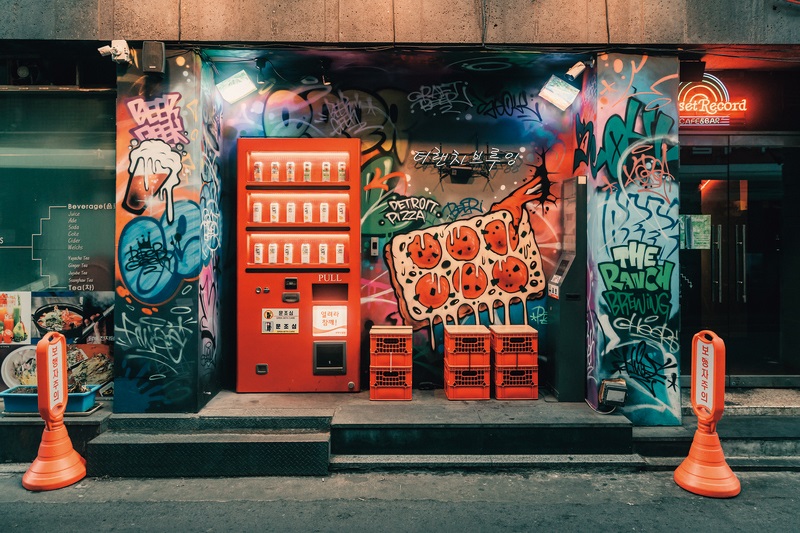
김미경(Kim Mi-kyoung, 金美京) 사회학 연구자
Kim Mi-kyoung Sociologist
